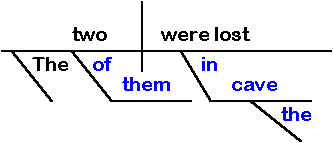
Editing for Sentence Structure involves examining the grammatical structure of your sentences. Before engaging in the exercise below, be sure to read Sentences, Sentence Structure.
How do I Edit my texts at the Sentence Level?
Sentence Patterns are groups sentences that share similar grammatical structures.
Consider Your Audience
When assessing whether your sentences are too long or complex, consider your audience: Educated readers have a greater tolerance for longer sentences. Younger and less experienced writers prefer shorter sentences. When writing for an international audience or addressing a very complex topic, sentences may need to be shorter.
Long sentences are not necessarily ineffective or wordy, nor are short sentences necessarily concise. After all, a 70-word sentence, properly constructed, can clarify relationships between ideas. On the other hand, a series of five-word sentences can result in choppiness and poor connections between ideas. Rather than trying to make all sentences a certain length or pattern, you can write graceful sentences by being aware of the demands different sentence patterns make on readers.
Place the Subject in the Beginning of the Sentence
As a general rule, you can improve the readability of your prose by limiting the number of words that come between the beginning of the sentence and its subject. Because the beginning of a sentence is its most emphatic part, you generally don’t want to clutter it with unnecessary transitional words or phrases. A second problem with long introductory phrases and clauses is that they strain the reader’s short-term memory. Notice, for example, how you need to juggle all of the opening conditions in your mind before you finally come to the subject of this sentence:
“If you write every morning for at least fifteen minutes, if you set aside the urge to criticize early drafts and ideas, if you analyze your rhetorical situation for a document, if you ask critical questions of your drafts, if you share drafts with colleagues, then you will improve quickly as a writer.”
Fortunately, most sentences with long introductory clauses can be easily improved; all you need to do is move the concluding words–that is, the independent clause–to the beginning of the sentence, as in the following revision:
Avoid Excessive Embedding Between the Subject and Verb
Embedding appositives or modifiers between subjects and verbs can enliven what is traditionally considered the least emphatic part of a sentence, the middle. Notice, for example, how the appositive in the following example from an education journal emphasizes the definition of sentence combining:
“Research suggests that sentence combining, an instructional technique that provides students with practice in the manipulation of various sentence patterns, is effective in developing the syntactical fluency of writers, elementary through college level.“
If we decided to give less emphasis to the definition, we could recast the sentence as follows:
“Research with elementary through college-level writers suggests that practice combining sentences promotes syntactical fluency.”
You should use embedding sparingly, however, because this pattern slows down the pace of reading. Such constructions require readers to keep these references in mind until they reach the verb and understand how to apply them. As English speakers, we need to link a subject of a sentence to its verb to understand a statement. As a result, we must hold in our short-term memory all of the defining and modifying words–appositives, participial phrases, relative clauses–that come between the subject and verb. It isn’t until we reach the verb that we understand what we are supposed to do with the modifying words





















